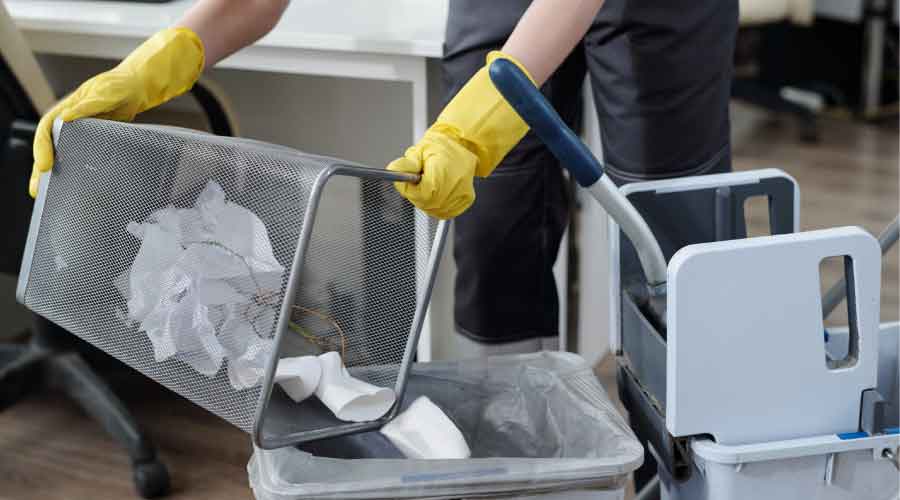
Green Seal Standard Targets Trash Bags
As single-use plastic products, trash bags and can liners have significant environmental impacts. December 13, 2022
By Dan Hounsell, Senior Editor
The sustainability movement that has swept through institutional and commercial facilities in the last two decades has touched every aspect of maintenance and engineering departments, from roofing and HVAC systems to paints and plumbing systems. Now, the impact has moved further into housekeeping product specification.
Green Seal recently released a draft certification standard to recognize trash bags and can liners that use less virgin plastic while maintaining top performance. This standard introduces the new concept of plastic efficiency, which prioritizes the result – curbing virgin plastic use – over the method used to achieve it.
Trash bags traditionally are recognized as environmentally preferable for incorporating post-consumer recycled (PCR) content, but this new model opens a second pathway to recognize products that use innovative technology to produce thinner liners that maintain tear and puncture resistance.
“Green Seal’s draft standard is designed to spur demand for trash bags that either give existing plastic waste a second life or that use innovative technology to produce thinner liners while providing assurance that they perform effectively,” says Doug Gatlin, CEO of Green Seal
As single-use plastic products, trash bags and can liners have significant environmental impacts. These products generally are made of virgin plastics that are produced using considerable amounts of energy and associated greenhouse gas emissions. Once produced and purchased, the 1 billion-plus trash bags American households use each year are sent on to landfills where they turn into microplastics that further pollute the environment.
Incorporating PCR content into a trash bag reduces plastic pollution by giving a second life to used plastic films that would otherwise end up in landfills or the ocean. It also reduces the carbon impact of trash bags by eliminating the greenhouse gas emissions associated with extracting and manufacturing new virgin material and avoids emissions from incinerating plastic waste.
But PCR content alone might not be an effective way to identify products that reduce virgin plastic use and the associated carbon impacts. A Green Seal analysis of products in the marketplace found that bags that feature PCR sometimes still incorporate the same amount of virgin plastic as their PCR-free competitors. Emissions reduction calculations also indicate that very thin liners produce fewer carbon emissions than thicker liners, even in some cases those that incorporate significant amounts of PCR content. So Green Seal’s proposed standard focuses on the actual environmental savings achieved, regardless of which method is used to achieve it.
The draft standard does not recognize non-conventional plastics such as bio-based, biodegradable, or compostable plastics. While these are marketed as sustainable alternatives, they are not currently effective solutions due to lack of recycling and composting infrastructure, improper consumer use and, in the case of bio-based plastics, land use and emissions concerns associated with growing crops to produce the materials.
Dan Hounsell is senior editor of the facilities market. He has more than 25 years of experience writing about facilities maintenance, engineering and management.
Next
Read next on FacilitiesNet












